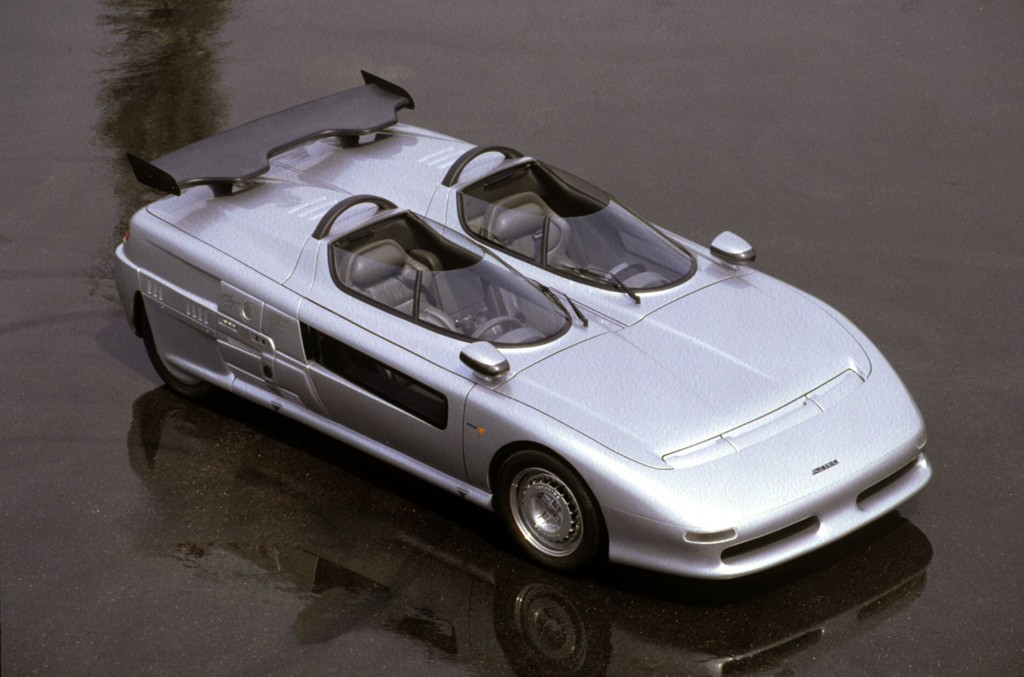
There are interviews that stand out in a journalist’s memory. In my case, they include boxing champion Archie Moore, Meadowlark Lemon of the Harlem Globetrotters, and tennis star and women’s sports advocate Billie Jean King. And then, there was the day a dozen or so years ago when I was in Italy doing research on a book on automotive design.
While in Torino, my itinerary included a visit to Italdesign and an interview with Giorgetto Giugiaro, grandson of a painter of frescoes, son of an artist, and who, soon after becoming a teenager, was sent to study both art and technical drawing.

Developments late last week involving Giugiaro, designer of so many now-classic and collectible vehicles and one-of-a-kind concepts, triggered this fit of nostalgia.
One of the instructors at the school where Giugiaro studied was the uncle of Dante Giacosa, who as technical director at Fiat also was in charge of vehicle aesthetics. At some point, Giacosa visited the school to see an exhibit of the students’ work and was so impressed that he offered Giugiaro an apprenticeship. In 1955, at the age of 17, Giorgetto Giugiaro was splitting his time between school and a full-time job in the special-vehicle-design department at Italy’s largest automaker.
Giugiaro was only 21 when Nuccio Bertone recruited him to succeed Franco Scaglione as head of design at Bertone, where Giugiaro would create cars for Alfa Romeo, BMW, Iso Rivolta, Fiat and Mazda, and concept designs for Aston Martin, Maserati, Ferrari and Porsche, among others.
Ghia came calling and Giugiaro did the Ghibli for Maserati, the Mangusta for De Tomaso as well as a string of concept cars during a two-year stay before he and former Fiat engineer Aldo Mantovani formed their own company, Studio Italiano Realizzazione Prototipi, (Italian Society for the Realization of Prototypes), which soon became known as Italdesign and which would produce a series of stunning production and concept cars.

At the end of the 20th Century, a global panel of automotive journalists would honor Giugiaro, who designed some 200 production vehicles and dozens of concepts, as “car designer of the century.”
Which brings me to my visit to his office and our interview. There were four of us in the room that day — Giugiaro, a member of his public-relations staff, an interpreter and me.
I asked a question, the interpreter translated, Giugiaro answered in Italian (he also speaks English, and likely other languages as well, but for this formal interview he was using a translation expert), the interpreter translated and I asked another question. But after perhaps Giugiaro’s response in Italian to my third question, everyone in the room was laughing — except me.
I asked what was so funny. I think it was the interpreter who said something along the lines of, “Mr. Giugiaro just said that he realized that none of his answers so far have had anything to do with the questions you asked.”
I responded that that was fine with me, because his responses were much better, much more interesting than my questions had been.
Now we all laughed, and as I recall, Giugiaro, who speaks English very well, started answering my subsequent questions not in his native language, but in mine.
Giugiaro’s schedule that day would allow only 20 or 30 minutes for my visit. Fortunately for me, he decided to extend that time by quite a bit. And it was one of the last things he said that stuck with me all these years.

Near his office is a large room, a private museum of cars and concepts he has designed. Most would consider it a personal trophy room. But not Giorgetto Giugiaro.
I asked him what he thought when he walked through that collection each day on his way to his office. But what he said he saw was not the beauty he had created, but the mistakes he had made, which he could use as inspiration, as motivation to do better.
“Every day,” he responded, “it is good to see all the errors.”
Most of us cannot spot the errors in Giugiaro’s long career in car design. Nor will I attempt to spot any error in his decision late last week, at the age of 76, to step away from the company he founded, the company in which he’d sold majority interest to the Volkswagen Group in 2010.
Instead, I’ll simply use the occasion once again to appreciate his work, and a memorable interview.




